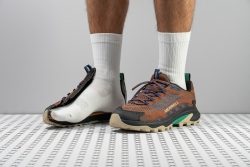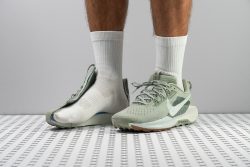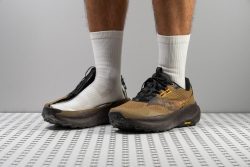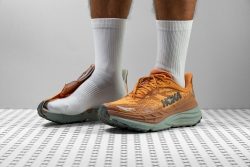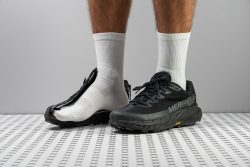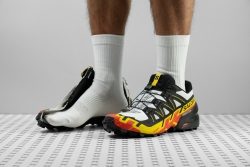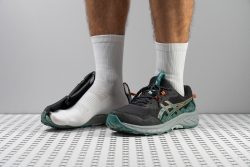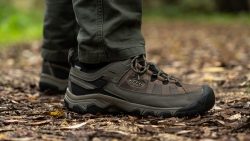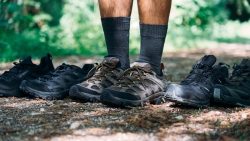7 Best Lightweight Hiking Shoes in 2025

We buy shoes ourselves. We earn commissions when you buy through us, at no extra cost. Why trust us
The best middle ground between trail running shoes and hiking shoes is lightweight hiking shoes. What’s not to love? They are light and usually offer rigid soles. In this guide, we explain which lightweight hiking shoes are the best and which features to look for when buying them.
After testing these shoes in our lab and on the trails, we have selected the best and brightest in different categories. Apart from being light, some shoes also boast excellent waterproofing for rainy days, some offer springy cushioning for speedy hikes, and some can drain water very quickly to let you walk through rivers and streams.
No matter what your priority is, we’ve got a recommended shoe for it.
How we test lightweight hiking shoes
Our process starts with us buying hiking shoes by drawing out money from our own pockets. We love free stuff, but when it comes to testing, we prefer getting the shoes on our own, so our opinions remain objective.
After that comes the actual testing of the shoes. We go hiking wearing the shoes and we do so in different weather conditions. We make sure to test the hiking shoes over different surfaces, from dry and loose, over rocky terrain to muddy obstacle-covered areas.
The next stop is our lab where we test the shoes using our tools such as a smoke machine, Dremel, calliper, and more! We gather data from these tests, analyse them and publish, together with the averages. This way, each shoe is compared to the average for a better context.
By the way, do you know that we also slice the shoes into pieces? Because yes, we do!
Best lightweight hiking shoes overall
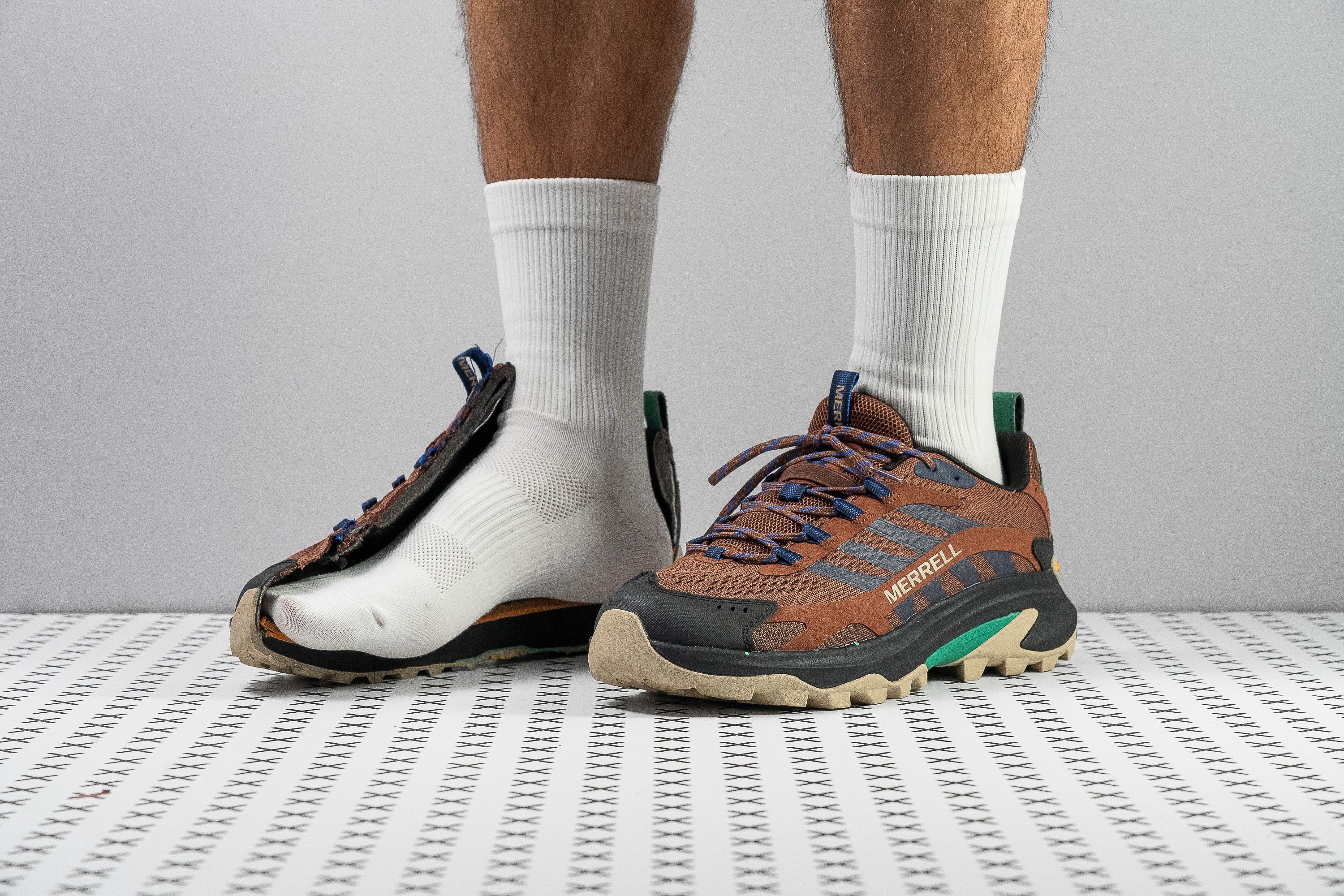























































What makes it the best?
After testing hiking shoes to their full capacities in the lab and outdoors, we found the Merrell Moab Speed 2 as the best lightweight overall. Fully living up to its name, its speedy and agile nature combined with its springy cushioning and snappy FlexPlate begs to break into a run, all with solid footing and plush comfort.
On foot, Moab Speed 2 almost feels like a trail shoe. Our scales confirm it’s only 11.6 oz (329g), 13.4% below average, keeping each stride effortless.
Surprisingly, this shoe maintained its weightlessness despite the massive 38.8 mm heel we measured with our calliper. This rises 6.0 mm above average and is made of plush full-length FloatPro Foam delivering all-day comfort. Our shock absorption test confirms its gentle nature with a solid 125 SA rating.
Even with its delicate foam, Moab Speed 2 feels impressively stable. Our cut-in-half shoe reveals the FlexPlate that embraces our midfoot, creating a balanced and controlled environment. Our manual assessment shows it’s tough to twist, earning the highest 5/5 torsional rigidity score, boosting stability, and preventing leg fatigue. The toothy 3.7 mm lugs along the Vibram rubber also contribute to our solid footing over moderate terrain.
However, while this shoe delivers reliable stability, there are more supportive shoes for specific purposes, such as backpacking with heavy loads.
Pros
- One of the lightest hiking shoes
- Plush and abundant cushioning
- Great support and stability
- Perfect grip for moderate terrain
- Excellent durability
- Breathable for summer
- Cosy step-in feel
- Two loops for easy on-off
Cons
- Frail inner lining
- Small debris gets inside
Lightweight hiking shoes with the best shock absorption
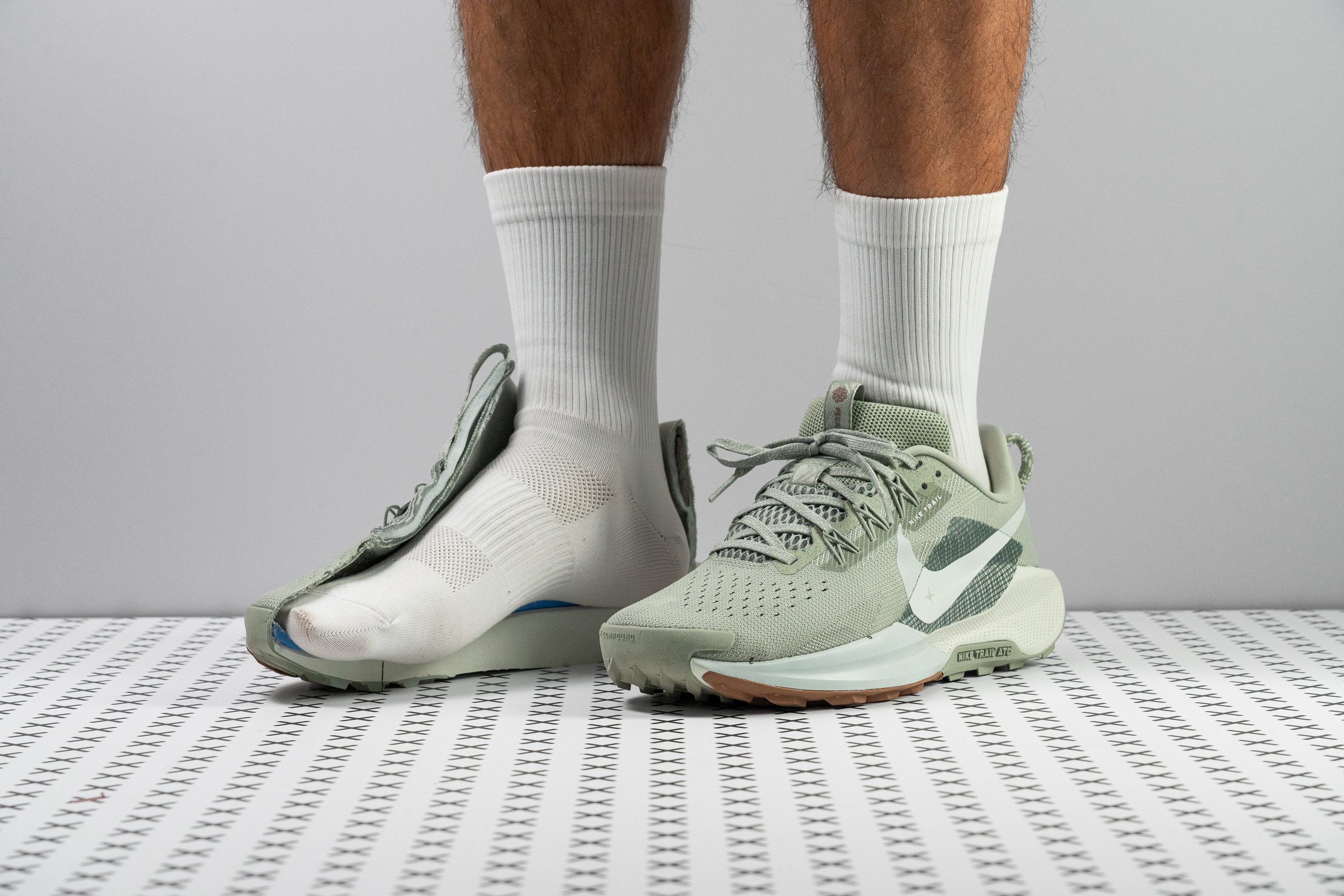






















































What makes it the best?
Our feet immediately recognised the Nike Pegasus Trail 5’s heavenly touch during our hikes. Our lab confirms it maintains a low weight while delivering a natural ride, strong underfoot protection, and bottomless comfort with its stress-reducing platform. It’s the lightweight hiking shoe, by far, with the best shock absorption out there.
First, we enjoyed velvety landings care of the joint-friendly ReactX foam. Our shock absorption and energy return tests back this up with impressive scores of 136 SA and a high 57.6% responsiveness rate. Both help reduce muscle fatigue by mitigating landing forces and assisting us in launching forward.
Second, Pegasus Trail 5 feels so effortless on foot that it makes us speedhike! Despite its cushioning, it stays just below average at 10.1 oz (286g). Its silky smooth transitions add to the shoe’s seamless feel, needing 8.3% less force than average to reach 30 degrees.
This Nike features All-Terrain Compound underfoot, performing superbly in our Dremel test, cementing its wear resistance with a small 0.8 mm dent. However, it performed poorly in our traction test, so we recommend avoiding wet surfaces and loose ground while wearing this pair.
Pros
- Fully gusseted tongue
- Reflective elements
- Durable upper construction
- New rockered sole
- Great for heel strikers
- Reasonably priced
- All-around comfort
- All-around comfort
Cons
- Weight increase
- Possibly too plush for trails
- Still lacks traction
Lightweight hiking shoes with the best traction
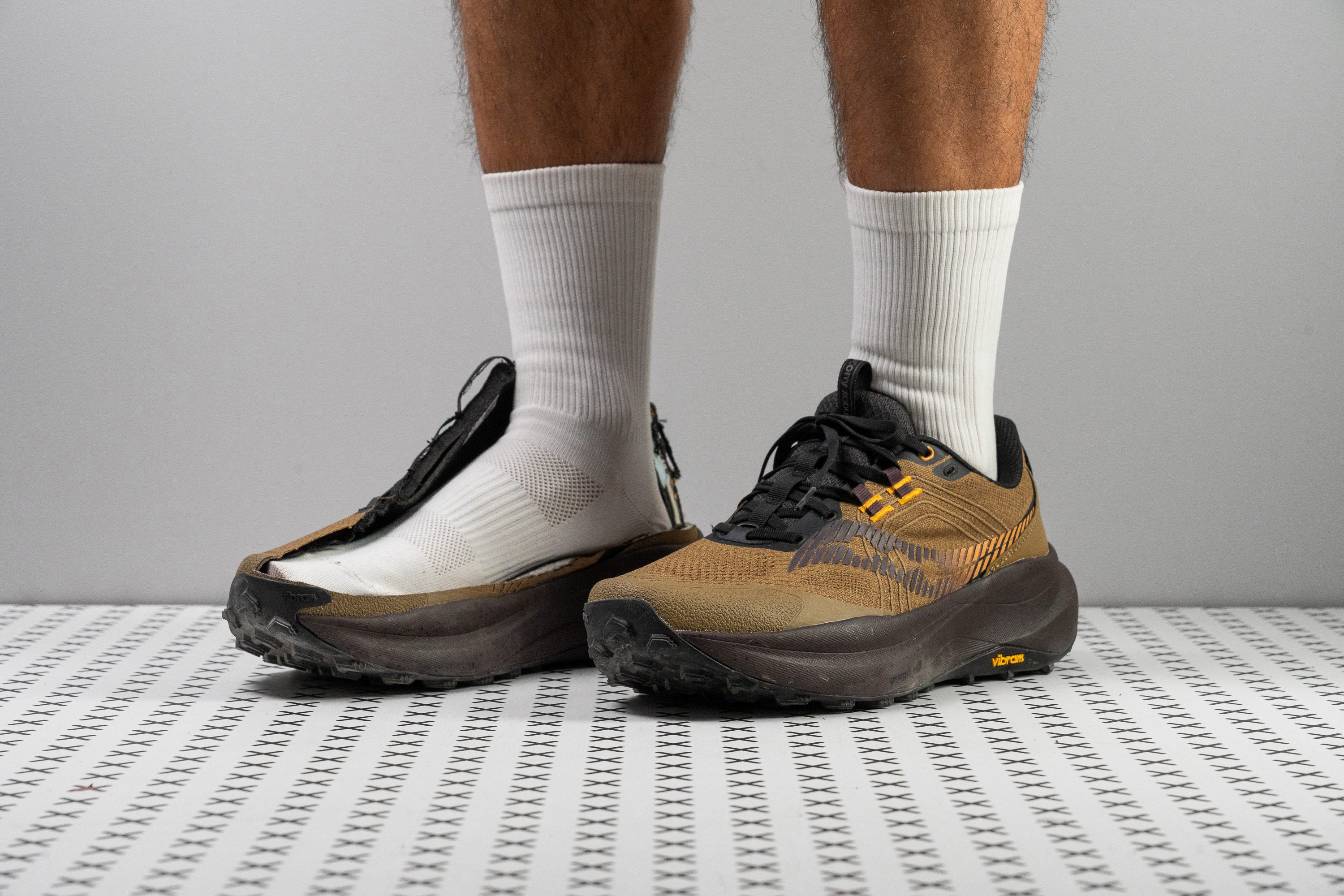
















































What makes it the best?
The Saucony Xodus Ultra 4 packs tonnes of cushioning and traction in its minimal package. Our feet enjoyed plush landings and steady footing across varied terrain, and its lab-tested grip outperformed the standard by a mile, securing its position as our best-traction lightweight hiking shoe.
Slips and slides are out of the picture as soon as we discovered the Vibram Megagrip rubber with 3.5 mm Traction Lugs in the outsole. We double-checked using our wet-condition test, and it smashed the average by 20.0% with its high 0.72 rating.
XU4 feels agile for hiking and can double as a running shoe with its 11.0 oz (312g) figure. For reference, the average hiking shoe in our lab weighs 17.9% heavier.
Feeling far from bulky, XU4’s generous 37.2/24.6 mm stack is a pleasant surprise. It offers well-protected landings, taking away much of the ground feel with its high 127 SA rating in our shock absorption test.
However, the discomfort arrives when our feet start to swell. XU4 features a narrow toebox, which may feel restrictive for those with broad feet.
Pros
- Amazing bounce from PWRRUN PB foam
- First Xodus Ultra with a Vibram outsole
- Stable platform underfoot
- Premium PWRRUN+ insole
- Works well for hiking too
- Full-length outsole coverage
- Excellent for ultras
- Fantastic traction on easy terrain
Cons
- Weight is becoming a real problem
- Tapered toebox fit
- Small price increase
- Weak heel padding durability
Lightweight hiking shoes with the best stability
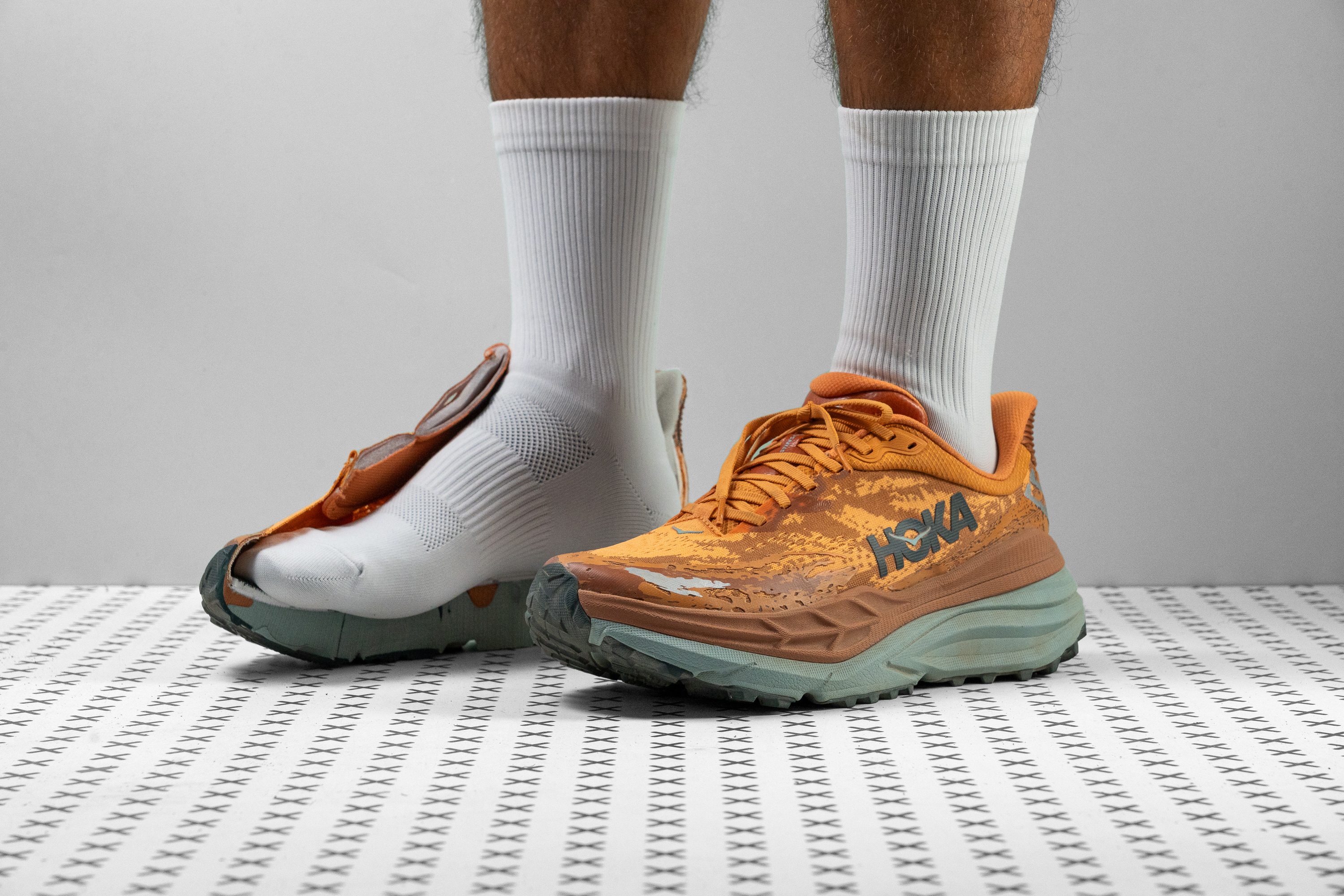












































What makes it the best?
The Hoka Stinson 7 feels highly cushioned and supportive over unforgiving terrain. Our lab evaluation shows it offers the best stability among lightweight hiking shoes, featuring a broad base and the active foot frame technology to balance out the generous foam beneath our feet.
We measured the platform and confirmed its broad measurements at 124.3/100.2 mm. The extra width ensures stable steps, together with the active foot frame technology, which allows us to be cradled by the foam rather than resting on top of it. This feature helps avoid spillovers and ankle twists, proven by its maximum 5/5 torsional stiffness.
Despite all the sturdy support, it feels plush and gentle underneath. With a sky-high 40.0/33.0 mm stack, we barely had any ground feel. Moreover, it offers tonnes of impact protection, proven by above-average ratings of 115/117 SA.
Stinson 7 is like a trail shoe on steroids, which means it can handle occasional speed hikes. Weighing 12.1 oz (342g), it’s much lighter than the average hiking shoe in the lab (13.4 oz/380g).
However, what its thick cushion did compromise is flexibility. It emerged 30.1% stiffer than average in our bend test, which may not cater to hikers seeking a relaxed and natural sensation.
Pros
- Works great as a hybrid shoe
- Massive stack provides excellent cushioning
- Responsive midsole
- Wide platform for underfoot stability
- Gobbles up miles with ease
- Secure heel hold and midfoot lockdown
- Well padded and comfortable
- Above average breathability
- Mild rocker geometry
- Consistent performance between warm and cold weather
Cons
- Too heavy for tempo sessions
- Not for wide feet
- Overall issues with durability
- Flared heel tab scoops debris into the shoe
Best lightweight waterproof hiking shoes
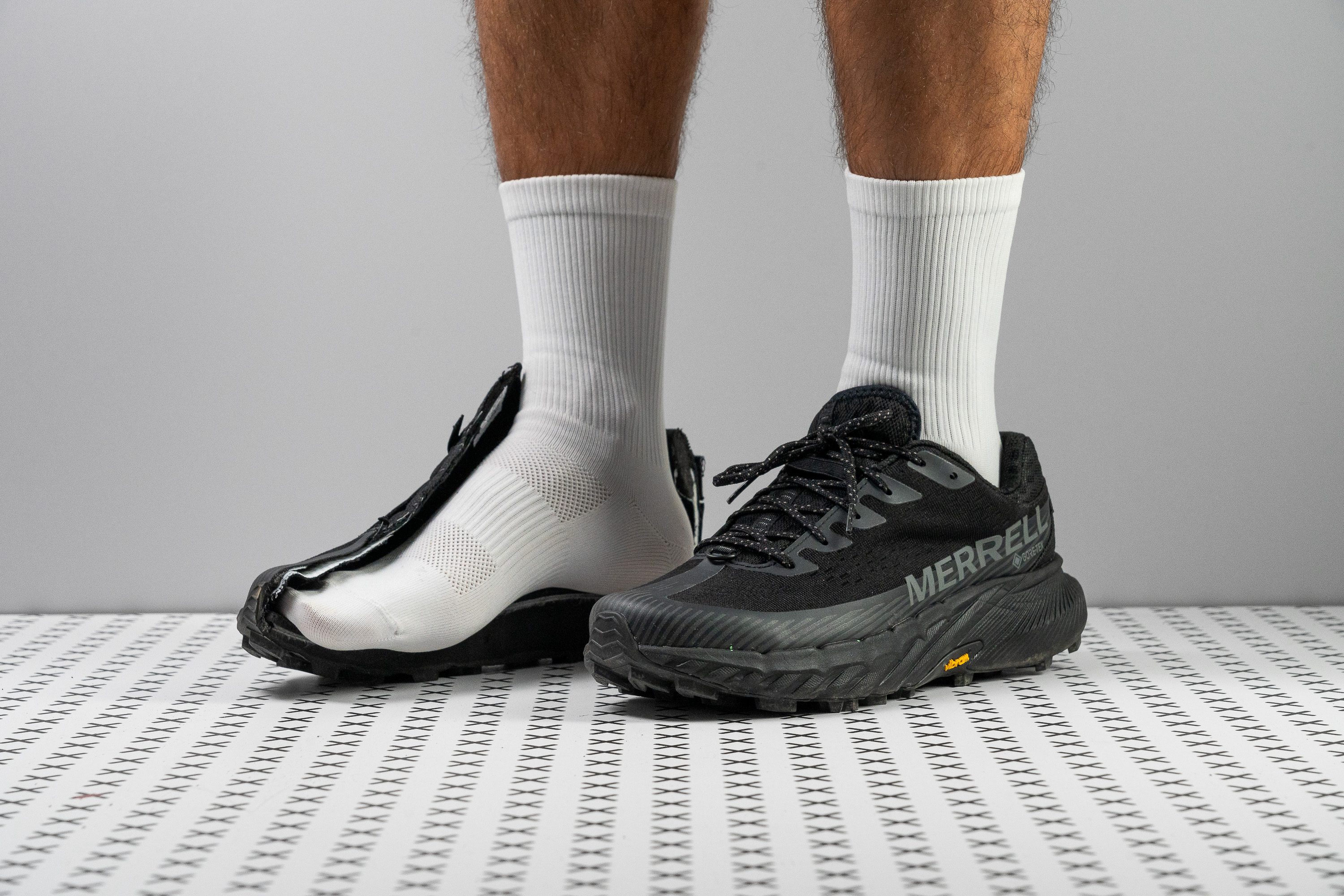













































What makes it the best?
Grippy, flexible, and light—the Merrell Agility Peak 5 GTX earned its name, delivering agility and protection in our treks. Lab tests confirm its airtight nature, which we truly appreciated on our encounters with rain or streams, making it our best waterproof, lightweight hiking shoe.
We placed the shoe under our light and smoke test, with nothing passing through the upper; we verified its water resistance with the lowest 1/5 breathability score. Even during sudden downpour or temperature drops, our feet remained comfortably dry and warm.
Because of its protective features, we were impressed with its light 10.4 oz (296g) build, 22.1% below average. We can easily speed hike since it almost feels like a trail running shoe. We also found its flexibility adds to its effortless feel, with a score 5.9% above average.
Underfoot, we measured the chevron lugs to be 4.4 mm deep. They effectively bite tougher sections and even soft ground, boosting our confidence across diverse settings. However, its wear resistance disappointed us. Therefore, hikers who often visit rugged paths or concrete pavements should find a pair with a more durable outsole.
Pros
- True waterproof protection
- Grippy, trail-ready Vibram outsole
- Perfect for cold, wet climates
- Can handle some challenging conditions
- Stable yet cushioned heel
- Improved for hiking and walking
- Well-designed outsole lugs
- Great build quality
- Keeps feet warm
- Rock plate
Cons
- Narrow toebox
- Heel padding durability concerns
- No reflective elements
- Drop differs too much from stated
Lightweight hiking shoes for technical terrain
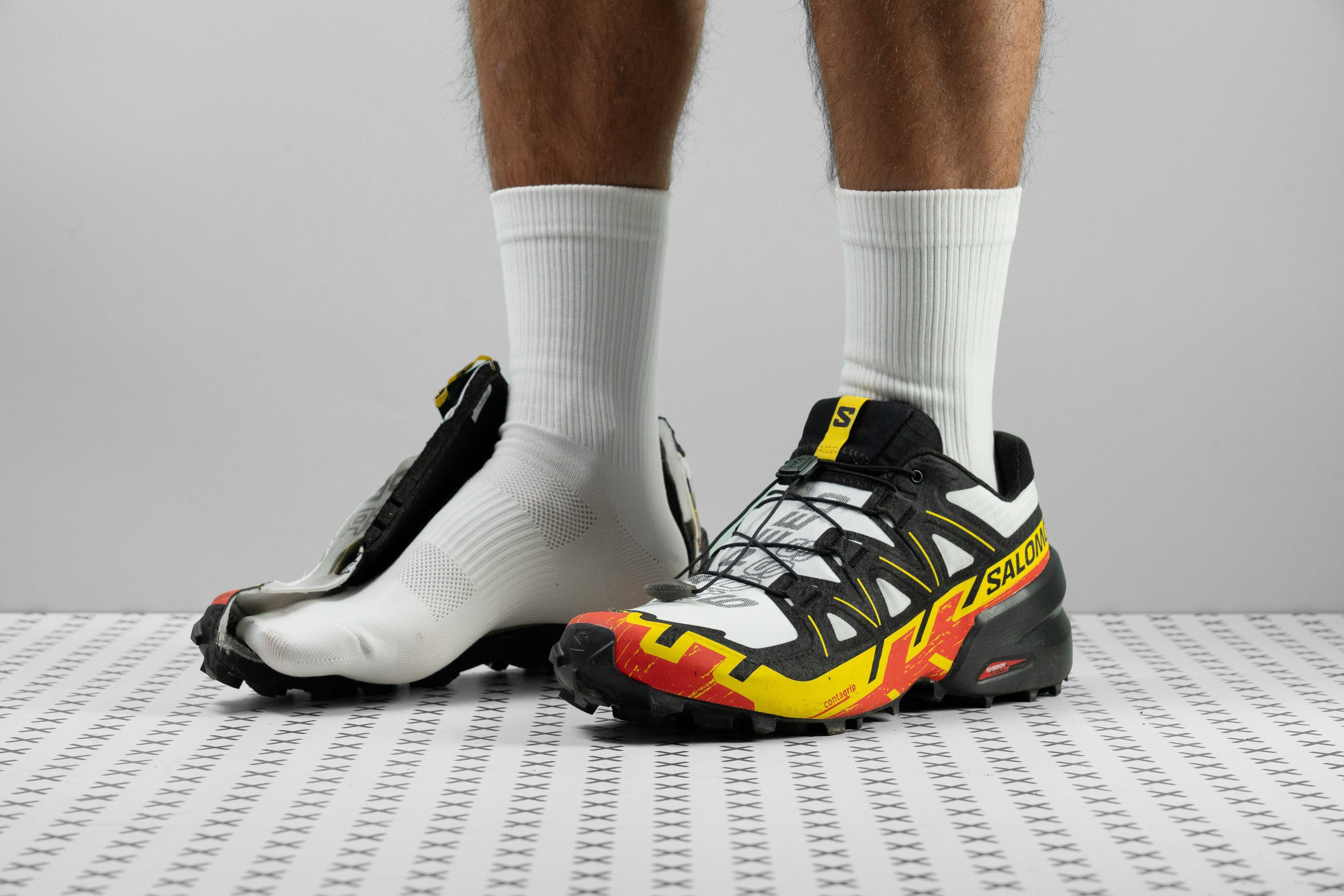



















































What makes it the best?
Pros
- Ideal for heel strikers
- Impressive durability
- Quick mud shedding ability
- Lightest Speedcross yet
- Secure lockdown with QuickLace system
- Enhanced ground feel in the forefoot
- Agile and responsive in fast corners
- Agile and responsive in fast corners
Cons
- Midsole feels like concrete
- Extremely poor breathability
- Not suitable for midfoot and forefoot strikers
- Low energy return
Best budget lightweight hiking shoes
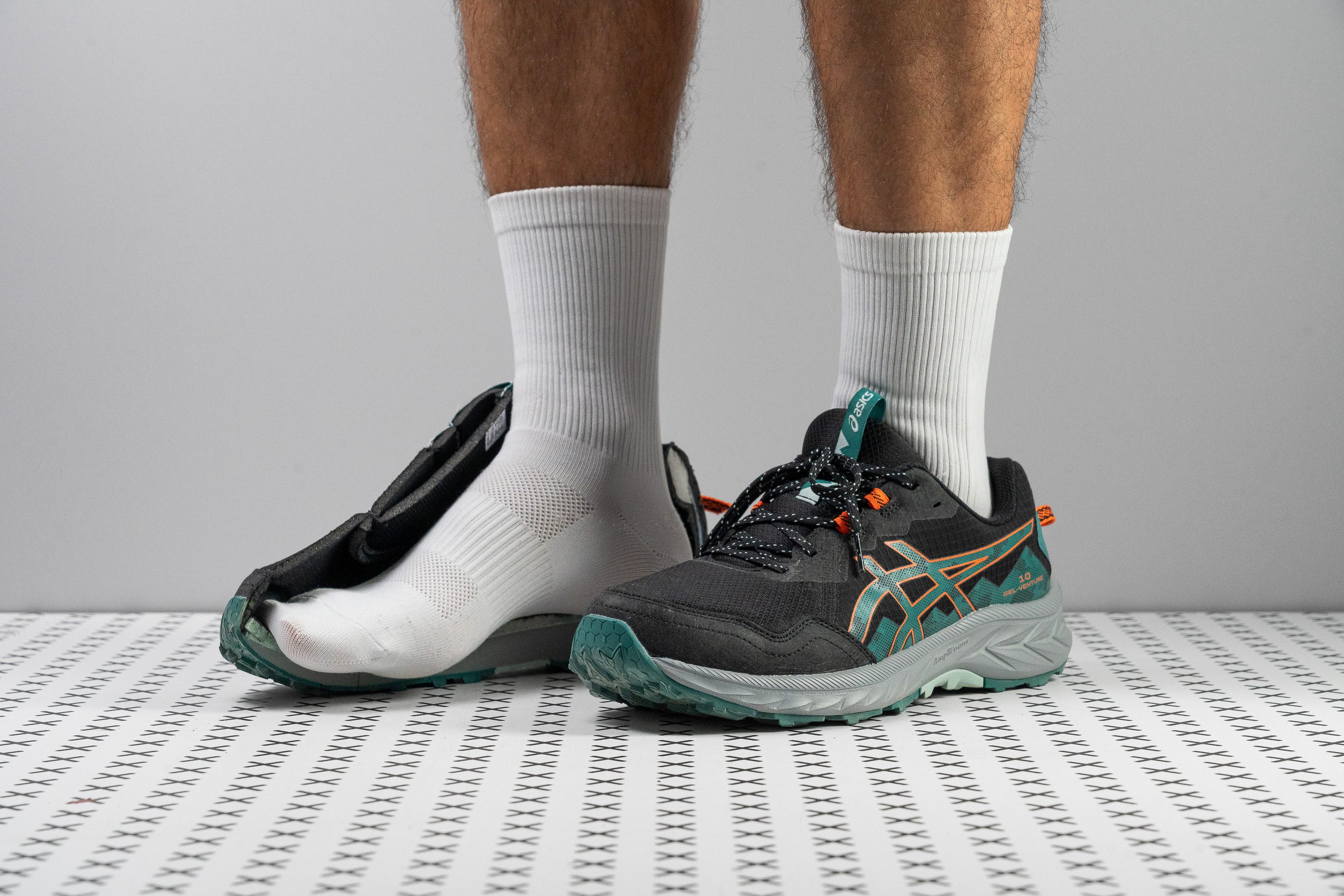











































What makes it the best?
For only £80, the ASICS Gel Venture 10 has so much to offer in its minimal package. It promotes relaxed treks through its flexible midsole and breathable comfort. Meanwhile, it aces our lab's Dremel test from the toebox to the outsole, assuring us it’s a reliable long-time companion. Ultimately, it takes the lead as the best budget lightweight hiking shoe.
The GV10 feels far from being a burden to us, whether in its price or weight. At only 11.4 oz (322g), it’s 23.9% lighter than the average hiking shoe. Moreover, it encourages smoother transitions through its pliable midsole. Our bend test verifies that it’s 13.7% more flexible than average.
Underfoot is an outsole that promises protection and longevity. Our Dremel only created a tiny 0.6 mm damage, while most shoes often end up with a deeper 0.9 mm dent, cementing GV10’s hardwearing nature.
Even in the toebox, the mesh upper withstood abrasion adamantly, resulting in a solid 4/5 durability score. What’s mind-blowing is how it promotes strong airflow too, a rare combination in our lab! In our smoke test, a steady stream of air escaped, so we awarded it a high 4/5 breathability rating.
However, its focus on ground feel and agility reduces impact protection. Hikers who prefer plush cushioning should aim for shock-absorbing platforms.
Pros
- Fantastic durability
- Amazing value
- Ideal for beginners
- Softer Amplifoam midsole
- Versatile for trail, travel, casual wear...
- Improved upper
- Plush tongue with pressure-free lacing
- Trail-inspired details at budget price
Cons
- Only for narrow feet
- Heavy
- Low shock absorption and energy return
How light are lightweight hiking shoes?
In our database, lightweight hiking shoes weigh less than 14.1 oz or 400g. We measure every single hiking shoe that we test and add it to our lab database.
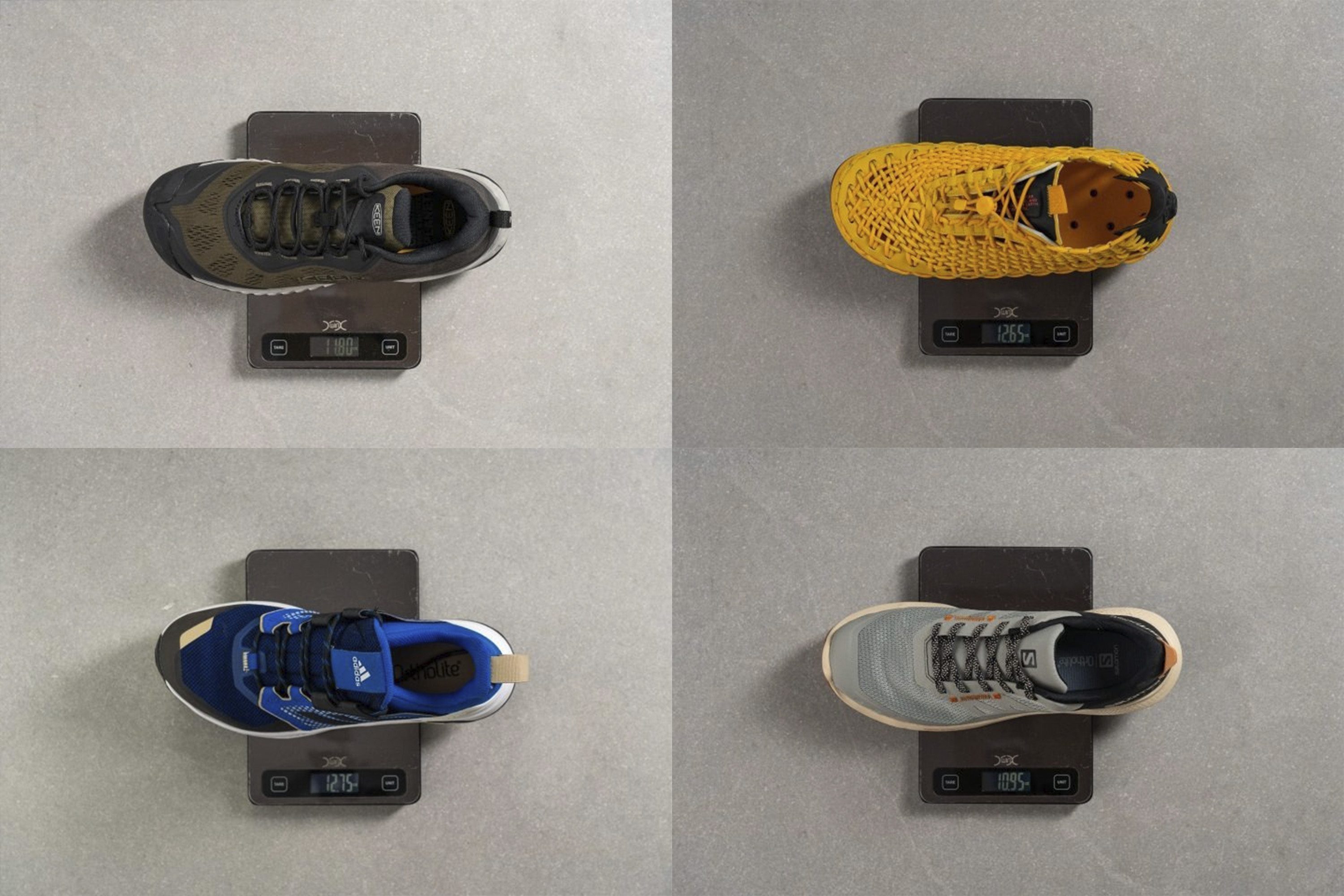
At the moment of writing this, the average weight of a hiking shoe in our database is 13.4 oz (377.6g). And it perfectly makes sense, because the average weight of a hiking boot is 17.8 oz (498.9g) and a trail running shoe 10.4 oz (289.1g).
When to use lightweight hiking shoes
Lightweight hiking shoes are a middle ground between trail running shoes and regular hiking shoes.

We recommend hiking in lightweight hiking shoes when:
- You want a hiking-shoe experience but at a light weight. Hikers usually prioritise these shoes when they want to move fast and light or when the terrain is not demanding.
- You want something a bit sturdier than the trail running shoes but don’t need it to be as stable and supportive as a heavier hiking shoe.
- You don’t want to bother with a break-in period. These shoes usually as for a short one or none.
- You plan to rock the hikers, maybe even in an urban setting, because they are so easy to wear and comfortable.
When NOT to use lightweight hiking shoes
Here are our tips on when to look for heavier hiking shoes:
- Your hike is long, maybe even a multi-day one, on a demanding terrain. As our feet get tired, we appreciate all the extra support we can get. Heavier shoes tend to be more supportive. Same goes for stability.
- You plan to carry a heavy backpack. The support and stability needed for this adventure are usually combined with hiking boots or mountaineering boots. When that’s not the case, the next best thing is to go for heavier hiking shoes.
Finding the best fit in lightweight hiking shoes
Them being lightweight, does not change how we should approach the buying process and testing whether the fit is the right for us.
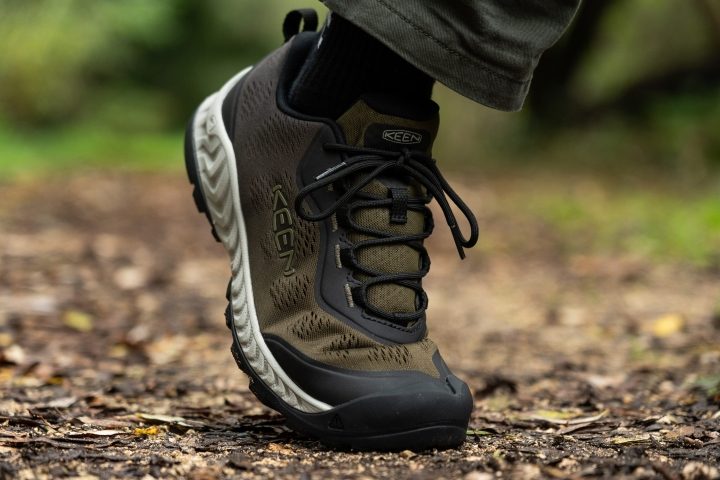
In our experience, these are the steps you should take to ensure the best fit possible:
- Go shoe shopping later in the day, afternoon or evening. We’re aiming for that normal swelling that happens from all-day activities. Similar to what happens when you’re out hiking.
- Wear the socks you usually wear when hiking. Bring them with you.
- If you’re using orthotics/insoles, bring them with you and try the shoes on with them.
- Put the shoe on, lace it up and try to sense if there are any pressure points. Nothing should itch, cramp, poke. We’re aiming for the perfect comfortable fit, not loose or too tight. Hikers prefer having 1 thumb’s width in front of their toes.
- Use the ramp to test the shoes on uneven terrain and on uphills and downhills. Ramps usually have different surfaces - track, grass, rocks. Test the shoes on them all. Look for no sliding within the shoes!
Grip is still a priority
Once we got the weight behind us, it is still important to consider the terrain and, based on it, find the grip that will not fail you.

We assess the grip during our wear tests and double-confirm everything in the lab by measuring the depth of the lugs with a calliper and the softness of the outsole with an HC durometer.
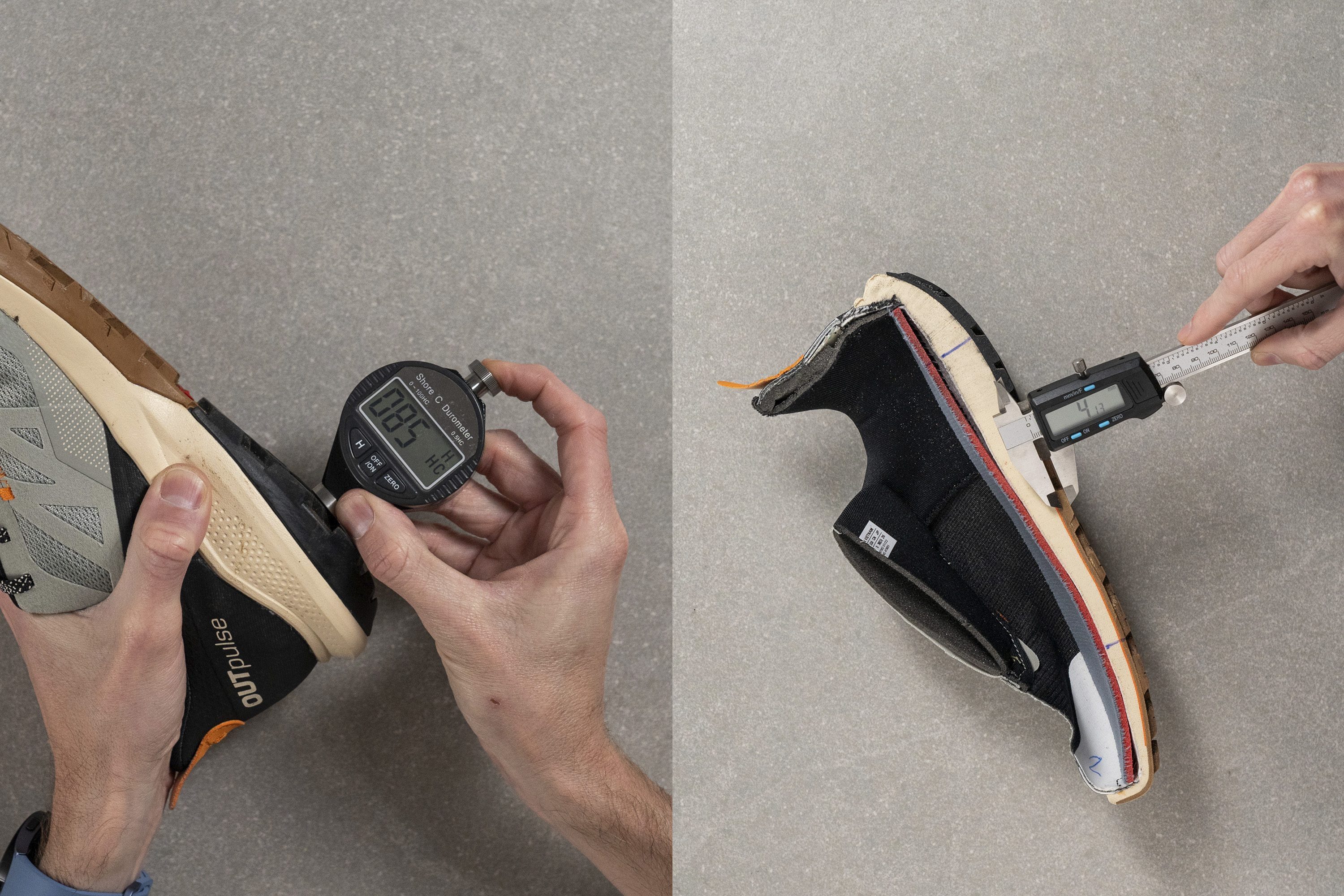
Here’s what we suggest you look for depending on the terrain:
- Lugs that are average (4 mm) or shallower will work on most well-maintained trails. If they are shallow, they can also work on hybrid adventures (road to trail). Best used for dry surfaces.
- Very deep lugs (4 mm and above) work best for wet terrain: mud, snow, slush. Lugs that are not cramped too close to each other shed mud better.
- Usually, the bigger the lugs, the softer the rubber, because it is stickier. With this in mind, don’t use big lugs on flat, hard surfaces like huge flat rocks or asphalt. The lugs will wear down FAST that way.
Note: lower numbers for outsole hardness mean softer rubber.
Shock absorption of lightweight hiking shoes
When hiking shoes are lightweight, one has to wonder where the cut was made. What's missing? If your thoughts immediately rush to the midsole and stack heights, you don't have to worry. Shock absorption tells us how protective the midsole is or how good it is at dampening the impact.
Because of this, we don't have to look at the heel stack height and midsole softness, but get straight to the point and look at the shock absorption lab test results. The higher it is, the better, especially if you're a heavier hiker or you plan to carry a heavy backpack.
Most durable lightweight hiking shoes
Even though you decided to get lightweight hiking shoes, it does not mean they are forgiven if they are not durable. Or, just because they weigh less, we want them to last long.
In the lab, we measure the durability of the outsole, upper and heel counter. When it comes to the outsole, we press a Dremel against the rubber and then measure the dent that it made.
The bigger the dent, the less durable the shoe is.

We also use a Dremel to damage the upper. Here, we visually assess the damage on a 1-5 scale, 5 being the most durable. This is especially important if you plan to hike over terrain covered with fallen branches, sharp rocks, and debris. It’s what the toe bumper and overlays are there for, to protect your feet, so we want the upper as durable as possible.
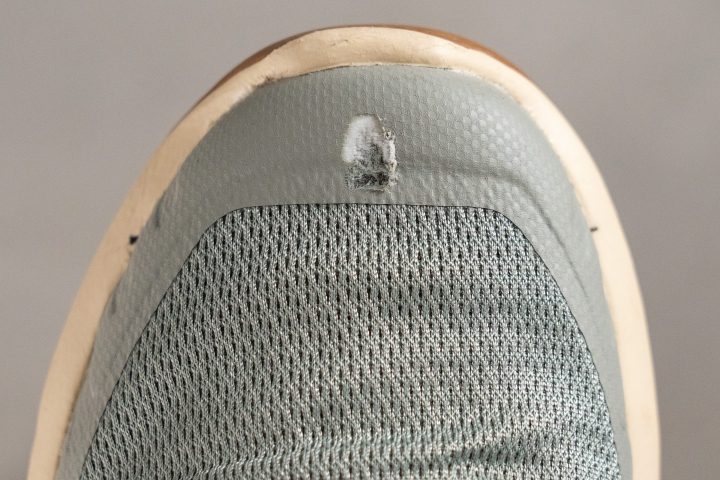
Last but not least, we use the same method and test the durability of the heel counter. 5 being the most durable, again.
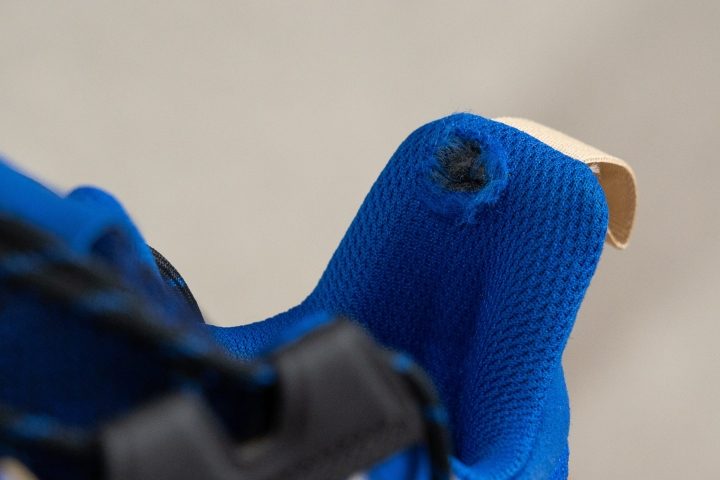
Now, you can analyse every shoe and prioritise the durability that matters to you the most:
Keep in mind that, in the table, we're looking for lower numbers for outsole durability (the smaller damage in millimetres that our Dremel has made), while for the other 2 columns, we're looking for high numbers because 5/5 is the most durable.
How breathable are lightweight hiking shoes?
As a general rule, we’d expect lightweight hiking shoes to be rather breathable. The rule applies except when they are waterproof (see next chapter).
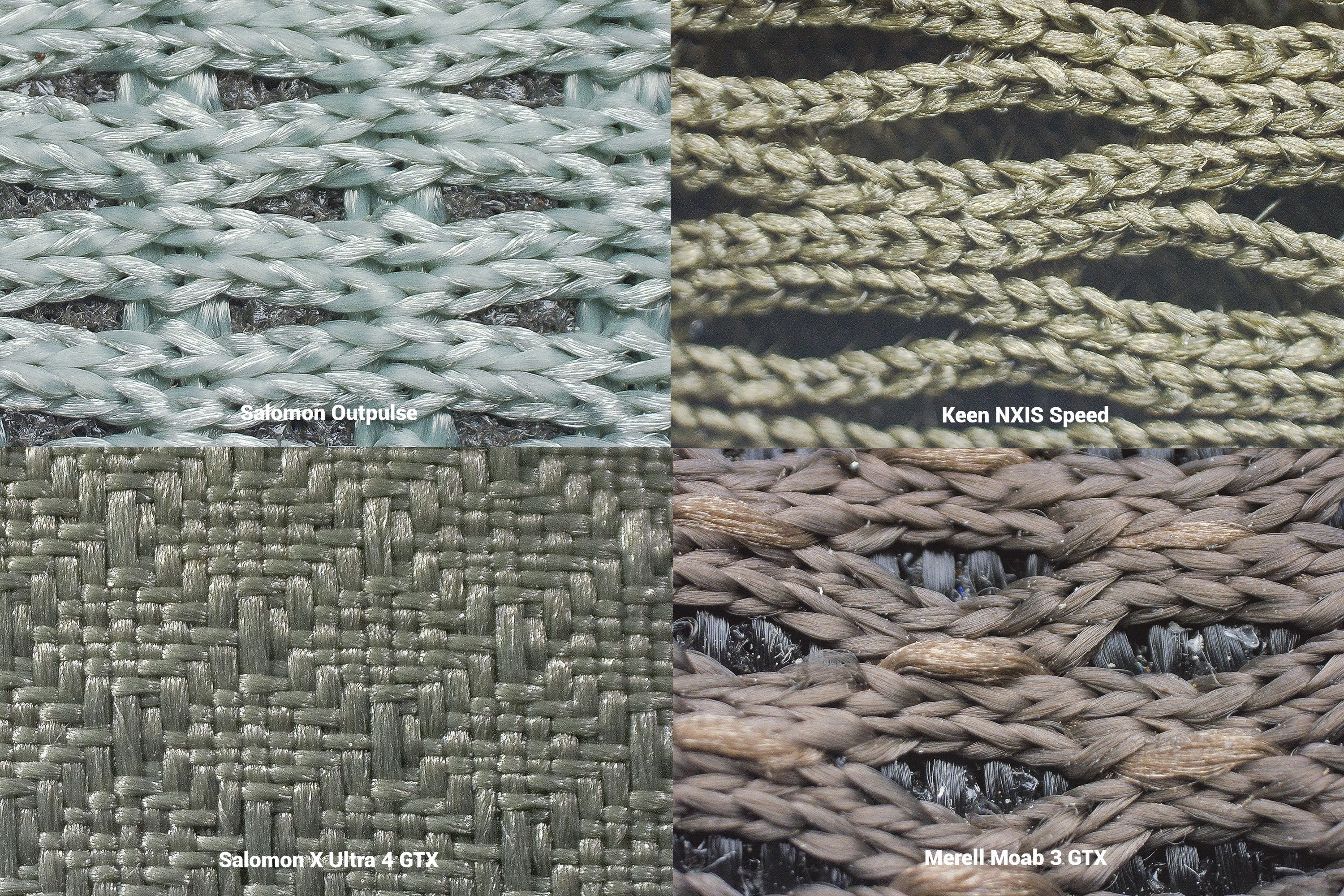
In the lab, we don’t just examine the upper under the microscope, but we also pump the smoke in the shoe and assign a rating for breathability: 1-5, where 5 is most breathable.
Here's an example of a lightweight non-waterproof hiking shoe that scored 4/5 on our breathability test and a waterproof hiking shoes that scored 2/5.
See which lightweight shoes got the flying colours in breathability:
Lightweight and waterproof: it’s possible!
Usually, we also think that waterproof shoes weigh more because of the membrane and advanced technology. There are shoes that actually fall into the category of lightweight AND waterproof!
Are lightweight hiking shoes cheaper?
Less material (in weight) does not mean less money, this time. At the moment, the average prices in our database look like this:
- Trail running shoes: £140
- Lightweight hiking shoes: £120.9
- All hiking shoes: average £120.9
- Hiking boots: £190.4

